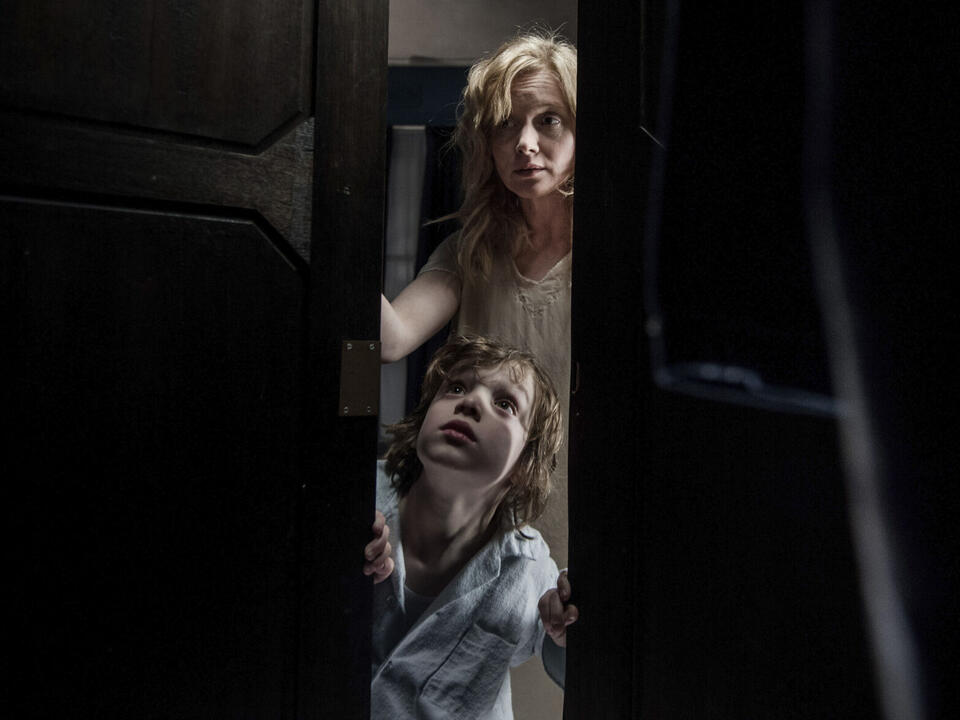Physical Address
304 North Cardinal St.
Dorchester Center, MA 02124
Physical Address
304 North Cardinal St.
Dorchester Center, MA 02124

NEW YORK — When Jennifer Kent’s film “The Babadook” first hit theaters a decade ago, it debuted in just two cinemas. However, next month it will be re-released across 500 screens.
“It’s strange but in a wonderful way. I can’t quite believe it’s been 10 years already. But it’s fantastic to go back and be a part of it,” Kent stated from Australia. “Considering that it only released on such a small number of screens, I feel proud that it’s still enduring.”
“The Babadook,” a haunting exploration of parenthood, signaled a new era of audacious, cinematic horror films. It’s one of many movies getting an anniversary re-run this year. Look at almost any movie theater marquee, and you’ll probably see a mix of new and older films.
In an age where almost everything is available at home with a few clicks, classic movies are surging on the big screen. Repertory cinema, which was once dominated by arthouses, has now made its way into multiplexes.
Older films’ ticket sales can be surprising. Over the past two weeks, the beloved 2009 stop-motion Laika Studios film “Coraline,” directed by Henry Selick, has grossed more than $25 million—a staggering amount for a 15-year-old movie. Earlier this year, Disney’s re-release of “Star Wars: Episode One — The Phantom Menace” made $19.4 million globally.
This fall will see anniversary releases of films like “Shaun of the Dead,” “Paris, Texas,” “Whiplash,” “Hoop Dreams,” and “Interstellar.” Although restored classics often return to theaters, it’s now becoming common for relatively recent films to get wide re-releases, and audiences are flocking to see them.
“The Babadook,” a small independent film propelled to cult status by rave reviews—even William Friedkin hailed it as an instant classic—may very well outgross the $1 million it made a decade ago in North America.
“It has grown a new fan base,” said Nicole Weis, vice president of distribution for IFC. “The majority of the fans didn’t see it theatrically. This strategy of bringing it back was so people could see a film they’ve fallen in love with as they should, as it was intended to be, on the big screen.”
The number of films released in theaters nationwide has decreased for various reasons, partly due to last year’s prolonged work stoppages. To help fill such voids, the nation’s three largest theater chains—AMC, Regal, and Cinemark—formed Fathom Events in 2005. Fathom distributes live broadcasts of the Metropolitan Opera and special events like the annual Studio Ghibli Fest, which brings back classics from the Japanese anime studio. Its release of “Coraline,” including 3-D screenings, set a new high mark for Fathom.
“The interest in classic movies has really gone up,” said Ray Nutt, chief executive of Fathom. “This year we’ll see a 75% increase year over year in this category.”
Fathom initially looked to play films on quieter cinema days like Mondays and Tuesdays but has expanded steadily. One of its biggest hits this year was a run of the “Lord of the Rings” trilogy over Saturday-Sunday-Monday. Upcoming classics include anniversary showings of “Rear Window,” “Blazing Saddles,” “Mean Girls,” and “The Fifth Element.”
“We joke around here a lot about what is the definition of a classic movie,” Nutt said. “It used to be something like 50 years or whatever, and now we’re talking about ‘Coraline’ at 15.”
The distinction between viewing experiences in theaters versus at home is becoming less about what’s new and more about how it’s experienced. Mark Anastasio, the program director of the Coolidge Corner Theatre in Brookline, Massachusetts, noted the appeal older films had when they were reopening from the pandemic closure.
“The interest in the repertory never went away,” Anastasio said. “We’ve got six screens here. It used to be that once or twice a week we’d run an older film at 7 p.m. And we’ve now increased our repertory offerings, so we’re showing an older movie every single night of the week, including Saturday and Sunday nights. And the demand is there.”
Now, Anastasio is finding he can program increasingly creatively, reaching deeper into filmmaker catalogs, and the crowds keep turning up. Such programming isn’t new for urban arthouses, but it’s expanding. Increasingly, older films are being shown on screens usually reserved for first-run movies. Some of this is out of necessity.
“There’s about 20-30% fewer films being majorly distributed now than there were just five years ago,” said Jeremy Boviard, the general manager of the four-screen Moviehouse in Millerton, New York. “There’s definitely more holes in certain programming weekends.”
The trend doesn’t seem to be slowing down anytime soon. Studios now regularly comb through their archives and patiently await notable anniversaries. For Kent, it’s a positive development in what she otherwise calls “a dark age for cinema.”
“I feel like people still crave that experience,” Kent said. “I went to see Dryer’s ‘Ordet’ and Bergman’s ‘The Seventh Seal’ on the weekend. Especially in ‘Ordet,’ it’s such a transcendent film. The audience was collectively experiencing it. I could hear people crying at the end. It’s the reason that we went to the cinema in the first place — to have an experience. Not to sit on our couch while we’re looking at our phones watching some sort of content. It’s not bringing out the best in us or in the work.”
Source: AP News



